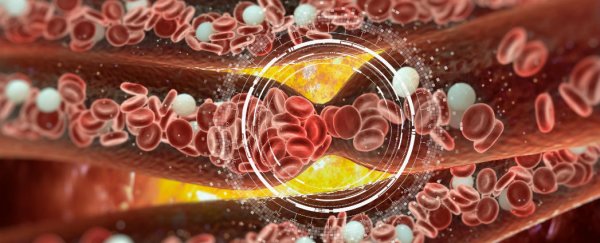Australian researchers have developed a nano-sized capsule that can be delivered to a patient intravenously to immediately target and break down the blot clots that cause heart attacks and strokes.
No only does the minuscule device start working within minutes, it's portable, which means it can be used in emergency situations before the patient has even made it to hospital. "This can be given in the ambulance straight away so you really save a lot of time and restore the blood flow to the critical organs much faster than currently possible," one of the team, Christopher Hagemeyer from the Baker IDI Heart and Diabetes Institute, told Rachael Brown at ABC News.
Around 80 percent of all strokes occur when a fatty deposit or blood clot blocks an artery that supplies blood to the brain. If this formation of blood clots, known as thrombosis, happens to block blood flow to the heart, a heart attack can follow. The longer the brain or heart are without oxygenated blood, the greater the risk that vital tissues will begin to die, so breaking down these clots as soon as possible is key.
If the team can get their device commercialised, it's set to make a huge difference to the many heart attack and stoke patients who don't actually respond to current treatments. According to the University of Melbourne, which was also involved in the development of the device, around half of the 55,000 Australians who experience heart attack or stroke every year cannot use the clot-busting treatments administered by paramedics due to the severe side effects that can cause excessive internal bleeding.
"They administer drugs which are also very fast-acting, but because it's free in the blood stream everywhere it causes side effects like bleeding because it's also attacking older clots," Hagemeyer told the ABC.
Instead, the new nanocapsule device only releases the medication in areas where a clot is growing exponentially and blocking a vessel. "The drug-loaded nanocapsule is coated with an antibody that specifically targets activated platelets, the cells that form blood clots," Hagemeyer said in a press release. "Once located at the site of the blood clot, thrombin - a molecule at the centre of the clotting process - breaks open the outer layer of the nanocapsule, releasing the clot-busting drug. We are effectively hijacking the blood clotting system to initiate the removal of the blockage in the blood vessel."
The researchers have been working on the device for the past five years, and while the results are looking really positive, they say it'll probably be another five years before it's made available to patients. The results been published in the journal Advanced Materials.
